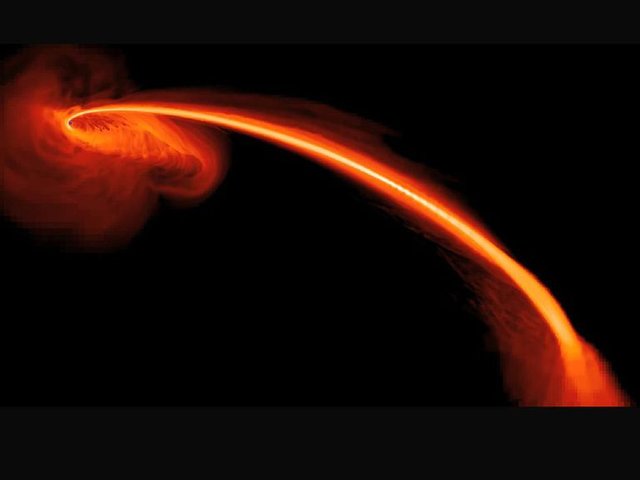Supermassive Black Hole Spotted Sucking in Gas

The black hole is far away from Earth, around a billion light-years away in a galaxy with the catchy name of PG211+143, to be exact. Pounds and his team were able to use the European Space Agency's X-ray observatory XMM-Newton to detect the black hole.
Launched in 1999, the XMM holds three high throughput X-ray telescopes and the first optical monitor flown in an X-ray observatory. Earth's atmosphere blocks out all space X-rays, meaning that to detect something like the surroundings of a 40-million-solar-mass (the standard unit of measurement in astronomy) black hole, you have to launch your telescope into space.
"The galaxy we were observing with XMM-Newton has a 40 million solar mass black hole which is very bright and evidently well fed," Pounds says. "Indeed some 15 years ago we detected a powerful wind indicating the hole was being over-fed. While such winds are now found in many active galaxies, PG1211+143 has now yielded another 'first', with the detection of matter plunging directly into the hole itself."
Black holes are so powerful that matter of all types gets stuck in a traffic jam of sorts trying to get in. This build up of matter on the edge of black holes are known as accretion disks. Spinning around the black hole in a death spiral, they can become misaligned with rings of gas breaking off and colliding with each other. Known as "chaotic accretion," the new finding shows that it could be common among supermassive black holes.
Even at the center of a faraway galaxy, chaos reigns.
There really aren't any phenomena comparable to black holes, their abilities to consume and destroy are unparalleled in the known universe. The fastest growing known black hole, for example, could destroy the sun in two days.
A team of astronomers have been able to observe a supermassive black hole sucking in gas with such remarkable speed that the only proper comparison is the speed of light. The gas was being sucked into the supermassive black hole at 30 percent of the universe's speed limit.
"We were able to follow an Earth-sized clump of matter for about a day, as it was pulled towards the black hole, accelerating to a third of the velocity of light before being swallowed up by the hole," says Ken Pounds, a professor at the University of Leicester, in a press statement.